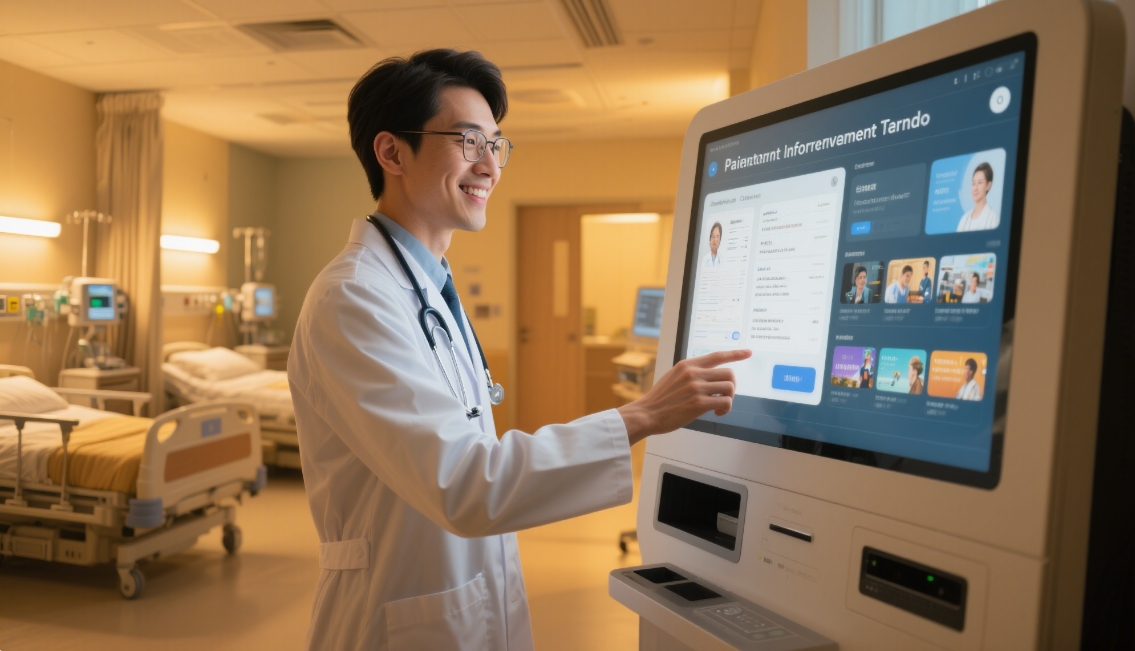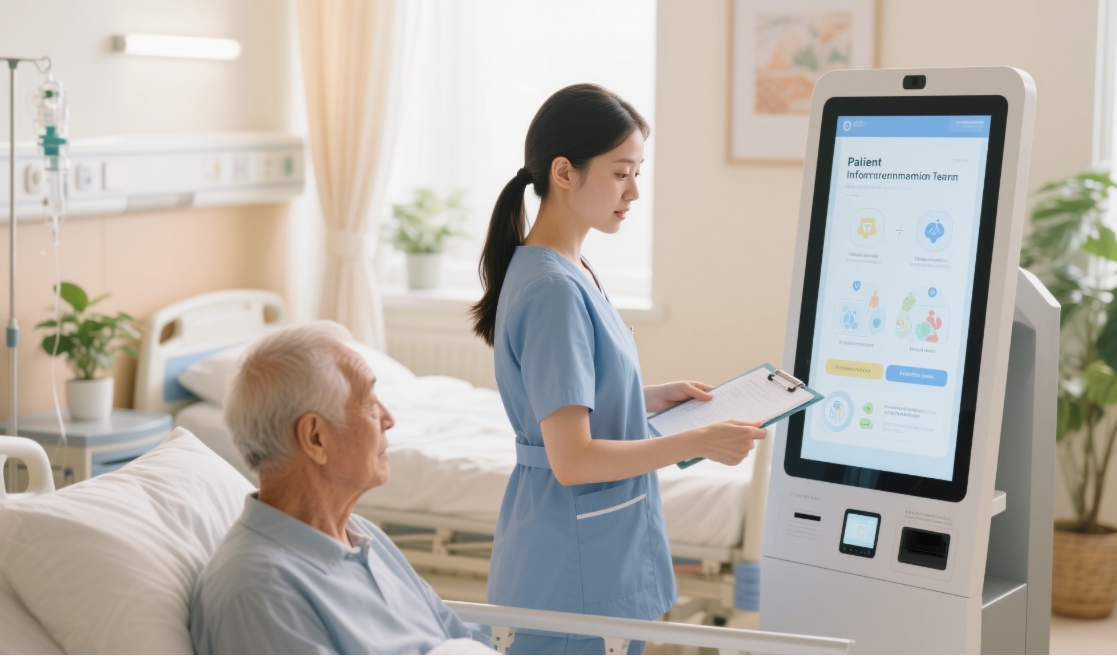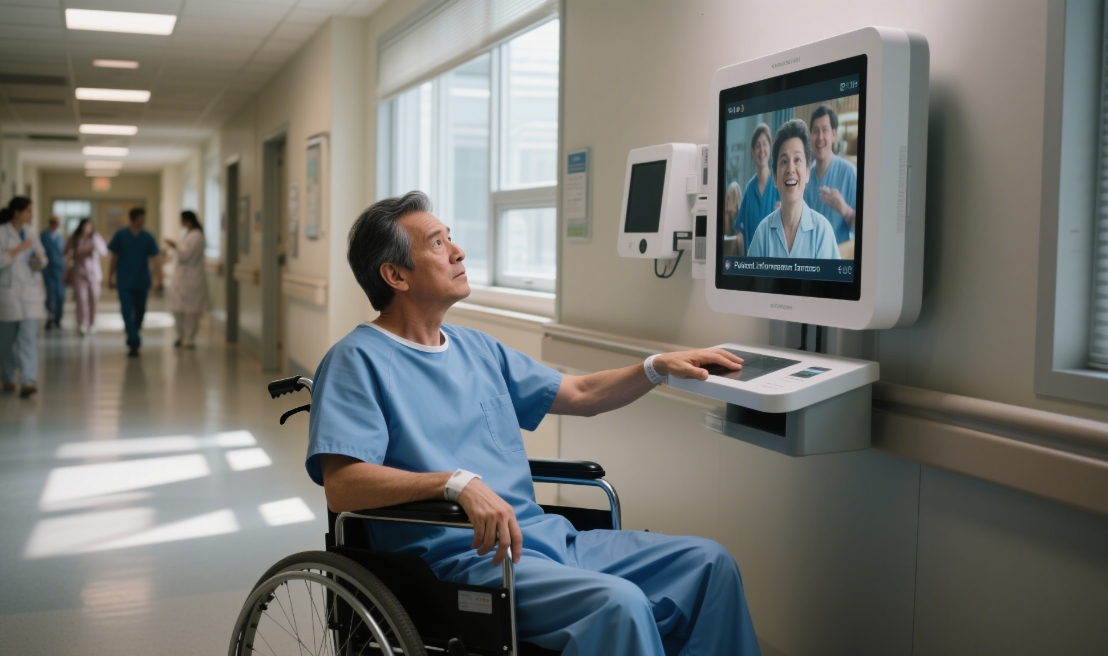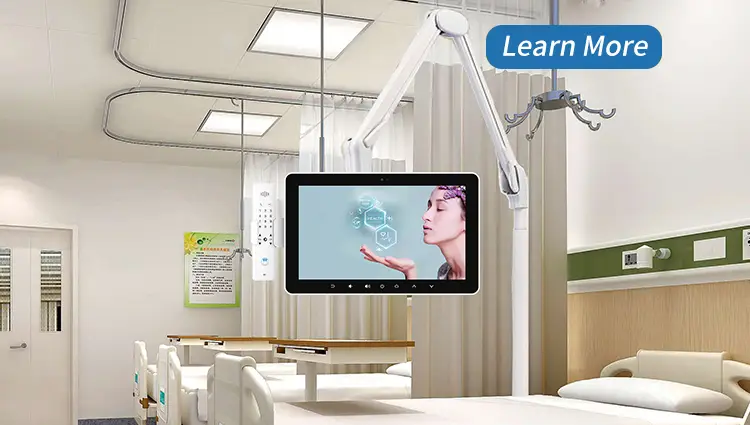Ever been stuck in a hospital room with nothing to do but watch the wall clock tick? Now imagine that instead, you’re watching Netflix, video-chatting with loved ones, checking your medication schedule, or learning about your condition—all from the comfort of your bed. That’s the magic of a Patient Infotainment Terminal (PIT).
These smart bedside devices are redefining how hospitals interact with patients, offering not just entertainment, but essential medical information and communication tools. Let’s dive deep into what they are and how they’re transforming modern healthcare.

Understanding the Basics
Definition and Core Features
A Patient Infotainment Terminal is an all-in-one touchscreen device installed at a hospital bedside. It functions like a tablet or monitor, providing entertainment, communication, education, and access to medical services—all in one user-friendly interface.
Types of Patient Infotainment Terminals
There are several models:
- Bed-mounted terminals
- Wall-mounted screens
- Mobile or cart-based units
Each is designed to suit different care environments.
Hardware and Software Overview
These terminals are usually equipped with:
- HD touchscreens
- Built-in cameras and microphones
- Wi-Fi/Bluetooth support
- Linux, Android, or Windows OS
- Hospital-grade antimicrobial casing
Core Functions of a Patient Infotainment Terminal
Entertainment Options
Let’s be honest—hospital stays can be boring. That’s why these terminals come loaded with:
- TV channels
- Streaming services (like Netflix or YouTube)
- Games and puzzles
- Music playlists and radio apps

Internet Access and Communication
Want to stay connected with family or scroll through social media? No problem.
- Patients can browse the internet, check emails, and video call loved ones.
- Messaging systems also allow direct communication with nursing staff.
Medical Information Display
One of the most valuable features:
- View lab test results, medication lists, and treatment plans.
- Helps patients stay informed and reduces repetitive questions to nurses.
Patient Engagement and Empowerment
Interactive Educational Content
From videos explaining surgical procedures to post-discharge care, terminals can offer custom learning materials.
Feedback and Survey Tools
Patients can quickly fill out feedback forms or satisfaction surveys, giving hospitals real-time insights to improve care.
Personalized Patient Portals
Login features allow patients to access their personalized health data, fostering a sense of ownership over their care.
Benefits to Healthcare Providers
Streamlined Operations
Less paperwork, fewer calls. Nurses can update records directly and avoid duplicated efforts.
Improved Workflow Efficiency
Doctors can display X-rays or MRIs at the bedside, enabling faster decisions.
Real-Time Data Access
Live data sharing ensures that everyone—from physicians to caregivers—is on the same page.
Enhancing Patient Experience
Reduced Boredom and Anxiety
Distractions like movies or games can help patients cope better, especially during long recoveries.
Sense of Control and Autonomy
Patients can adjust room settings, order meals, or request assistance—all with a few taps.
Accessibility Features
Many systems include voice control, zoom functions, and language translation to accommodate different needs.
Infection Control and Safety
Antimicrobial Touch Surfaces
PITs are made with hospital-grade materials that resist bacteria, helping prevent infections.
Hands-Free and Voice-Controlled Options
Minimizes physical contact—especially crucial in ICU or isolation rooms.
Integration with Hospital Systems
EMR and HIS Compatibility
These terminals often sync with Electronic Medical Records (EMRs) and Hospital Information Systems (HIS) to streamline data flow.
Nurse Call and Service Request Functions
Patients can call a nurse, request water, or report issues instantly—no more clunky call buttons.
Use Cases in Different Healthcare Settings
General Wards and Patient Rooms
Perfect for boosting comfort during long-term stays.
ICU and Critical Care Units
Even in high-dependency areas, PITs help reduce isolation and improve communication.
Pediatric and Geriatric Care
Custom interfaces with large icons or gamified content are ideal for children and seniors.
Technological Innovations
AI-Powered Features
Voice assistants, smart reminders, and predictive analytics are becoming part of the package.
Cloud Integration
Enables seamless updates and remote management by IT teams.
Remote Monitoring Capabilities
Vitals and sensor data can be accessed directly on the screen by caregivers or even family.
Challenges and Considerations
Cost and Budgeting
Yes, they can be pricey—but the ROI in patient satisfaction and efficiency is significant.
Data Security and Privacy
With sensitive health info involved, these systems must follow HIPAA and GDPR standards.
Staff Training and Adoption
Hospitals need to train staff well to ensure maximum utilization of the system.
Future of Patient Infotainment Terminals
As we move toward smart hospitals, PITs are evolving into digital health hubs—connecting wearables, telehealth, and AI to create a fully integrated care environment.

Conclusion
A Patient Infotainment Terminal is more than just a fancy hospital gadget. It’s a bridge between comfort and care, entertainment and education, convenience and communication. These devices are changing the way patients interact with their environment—and the future of healthcare looks smarter, more connected, and a lot more patient-friendly because of it.
FAQs
1. What features does a patient infotainment terminal typically include?
Touchscreen interface, internet access, entertainment apps, medical data display, nurse call integration, and communication tools.
2. How does it help healthcare providers?
It improves workflow, enhances communication, reduces repetitive tasks, and increases patient satisfaction.
3. Are these terminals secure for patient data?
Yes. Reputable systems follow strict security protocols like HIPAA and GDPR compliance.
4. Can patients use their own devices instead?
While personal devices offer entertainment, they don’t integrate with hospital systems or offer medical information access.
5. Are patient infotainment terminals worth the investment?
Absolutely. They improve patient care quality, operational efficiency, and overall hospital reputation.
What is a Patient Infotainment Terminal?
A Patient Infotainment Terminal (PIT), also known as a bedside infotainment terminal, is an interactive system designed for use at a patient’s bedside in a hospital setting. These terminals offer a range of features, including entertainment, communication, health information, and education, with the goal of enhancing patient experience, reducing anxiety, and empowering patients to actively participate in their care.
Key Features and Benefits:
- Enhanced Patient Experience:PITs provide entertainment options like movies, TV, and games, as well as access to news and other informational content.
- Improved Communication:Patients can communicate with loved ones through video calls, messaging, or email.
- Patient Education and Empowerment:PITs can provide access to patient education materials, health information resources, and information about their specific condition and treatment.
- Reduction of Anxiety:By providing distractions and access to information, PITs can help reduce patient anxiety and improve their overall well-being.
- Facilitation of Shared Decision-Making:PITs can provide patients with the necessary information to make informed decisions about their care.
- Patient Engagement:PITs encourage patients to take an active role in their care by providing access to information and tools for self-management.
- Meal Ordering Service:Some PITs offer a meal ordering service, allowing patients and their families to order meals and snacks directly from the bedside.
- Customizable UI:Many PITs offer customizable user interfaces, allowing hospitals to tailor the system to their specific needs and branding.
Examples of PIT Features:
- Entertainment: Movies, TV shows, streaming services, and games.
- Communication: Video calls, messaging, email.
- Patient Education: Videos, brochures, and other educational materials.
- Facility Information: Access to hospital services, directions, and contact information.
- Patient Records: Access to patient-specific information, including treatment plans and medical history.
- Remote Monitoring: Integration with remote patient monitoring systems to allow clinicians to track vital signs and other health data.
- Interactive Features: Touchscreen interfaces, voice control, and other interactive features to enhance patient engagement.

